Strawberry Fig Preserves
Fresh figs and ripe strawberries really bring out the flavor in this recipe for simple homemade strawberry fig preserves.
This post may contain affiliate links. Click here to learn more about how affiliate links are used on this site.
A few years ago, when I first discovered jam making, I went a little overboard. To the point where I had to ban myself from making anymore jam until we ate the stockpile that was accumulating in our pantry.
When we finally make it down the last jar, it was the dead of winter. Not a fresh berry or juicy peach to be had for months! At the beginning of March, I began stalking the Facebook page of the farmer’s market down the street for signs of fresh Louisiana strawberries. Last week I finally managed to snag a flat. Driving down the road with the windows down, the sun shining, and a box of fresh strawberries in the seat next to you is good for the soul.
Ingredients you will need
- 3 cups fresh or frozen strawberries washed, hulled and sliced
- 3 cups fresh or frozen figs, stemmed and chopped
- ¼ cup bottled lemon juice
- 4 cups white granulated sugar
- 3 tablespoons pectin such as Sure-Jell
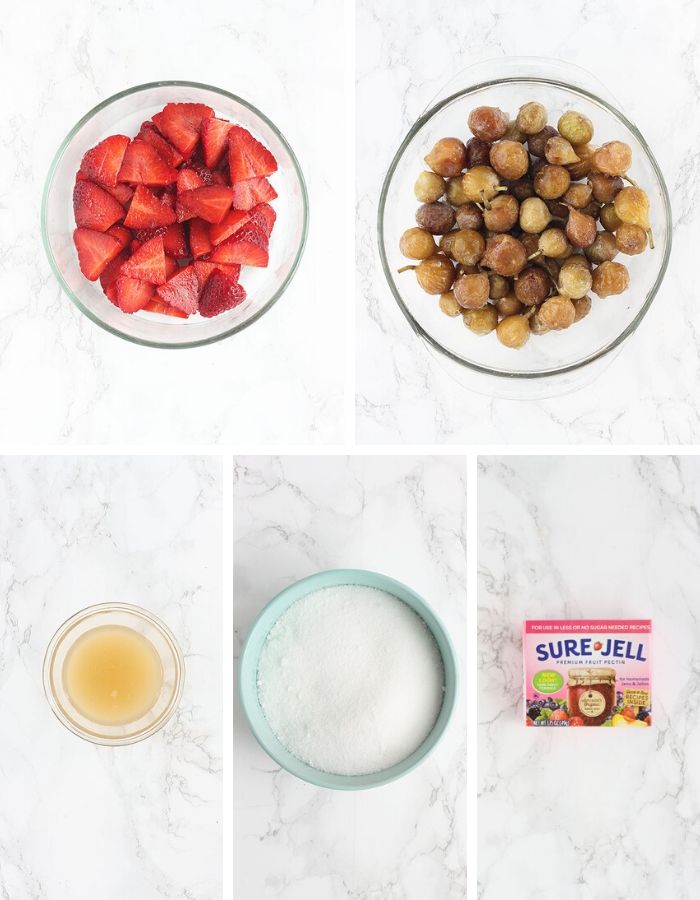
Chop and cook down the fruit
Place the strawberries and figs in a blender or food processor. Pulse a few times until the fruit reaches your desired consistency. I like my strawberry fig preserves to be on the chunky side, so I leave a few bits of fruit remaining. Pour the pulsed fruit into a large saucepan. Add 1/4 cup of bottled lemon juice.
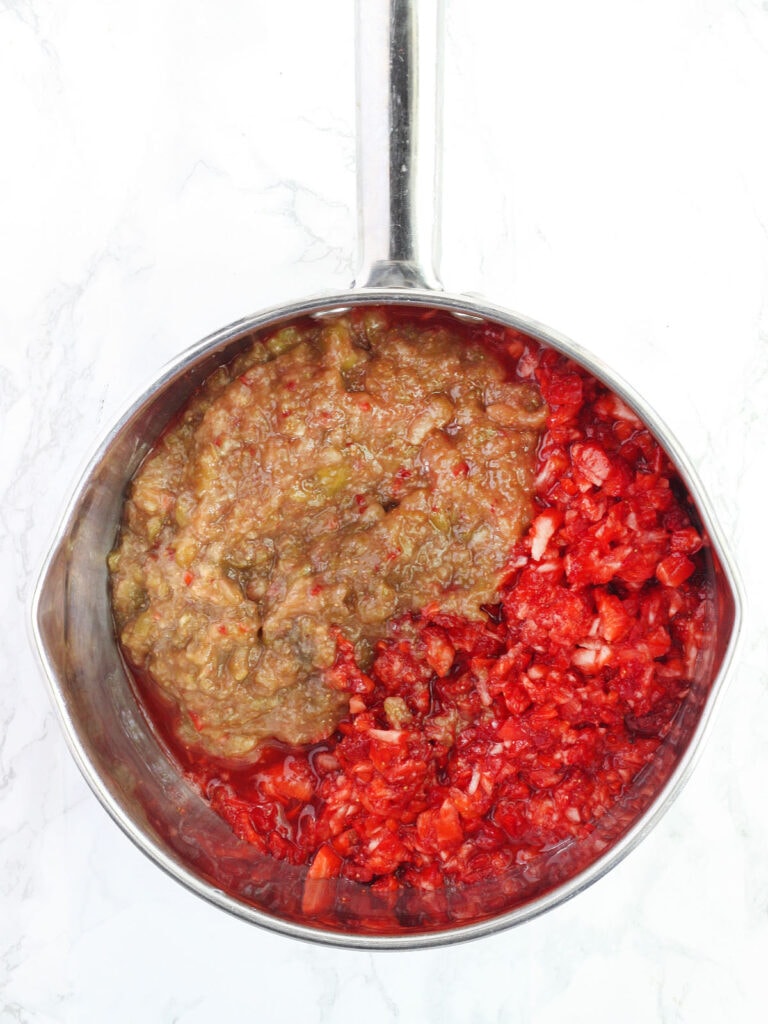
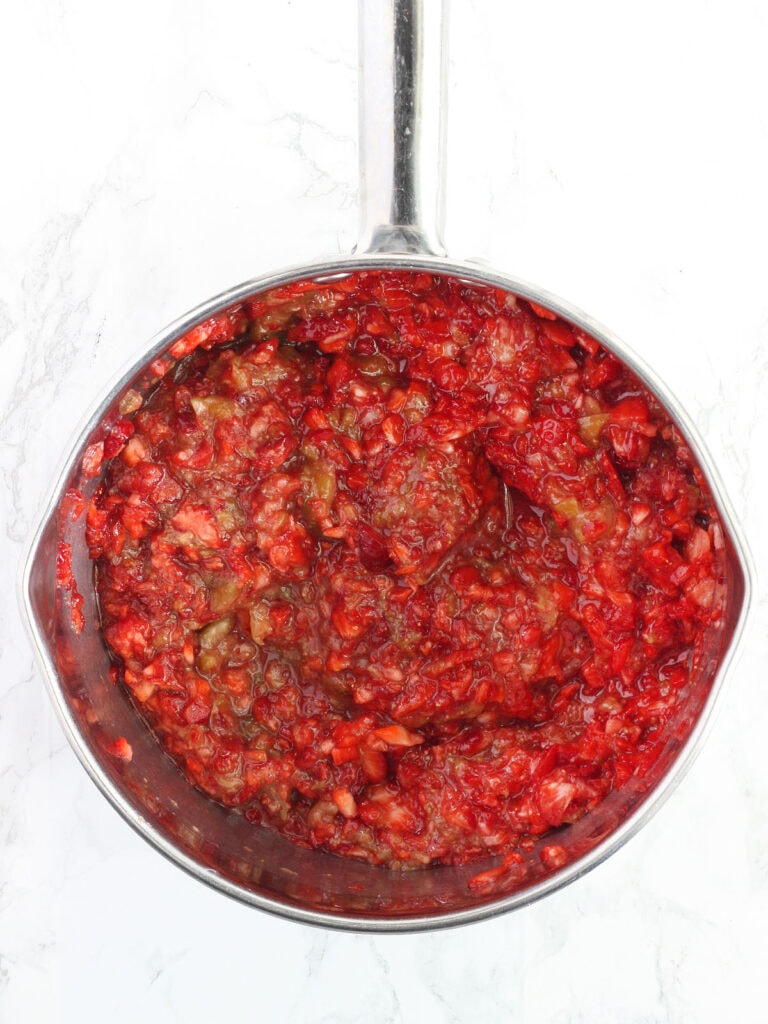
Add the pectin
Next, add the pectin. Pectin is a naturally soluble fiber used as a thickening agent. Some fruits and vegetables – such as apples – contain more pectin that others. Strawberries and figs do not contain a lot of natural pectin; therefore, we need to add it. Stir the pectin into the fruit until it is dissolved.
Bring the mixture to a full rolling boil over medium-high heat, stirring constantly so the fruit doesn’t stick to the bottom of the pan. Full rolling boil means that the boiling does not stop when you stir.
Add the sugar
Sugar does more than just make the jam taste good. First, it works with the pectin to help the preserves thicken. Sugar also helps keep the color of the fruit and prevents the formation of mold or bacteria. It is important to use the exact amount of sugar called for in a recipe. Using less might result in jam that doesn’t gel. Most experts recommend using white granulated sugar.
Why add a tablespoon of butter?
Place one tablespoon of unsalted butter on top of the strawberry fig preserves and bring it back to a rolling boil over medium high heat. Boil for one minute, stirring constantly. Remove the pan from the heat and remove any foam, if any, that has formed on the top.
Butter may seem like a strange addition, but it serves a purpose. Once the sugar has been stirred in, we’re going to bring the jam to a boil. As it boils, foam will start forming on the surface. The foam won’t hurt you or the jam. In fact, you don’t have to remove it at all. But it can make the preserves cloudy. The protein in the butter cuts the surface tension and reduces the foam. It will not affect the flavor.
The spoon test
Here’s the million dollar question … after all that, how can you tell if your strawberry fig preserves have set? The jam will continue to thicken as it cools. But there is one way to determine right away if all your hard work has paid off — the spoon test.
Place a metal spoon in the freezer for several minutes. Once it is good and cold, remove it from the freezer and dribble a few drops of warm preserves into the bowl. The preserves should thicken up almost instantly.
Storing strawberry fig preserves
Strawberry fig preserves that have not been canned or have been opened should be stored in an airtight container in the refrigerator and consumed within three months.
The preserves can also be frozen for up to a year. Be sure to leave 1/2-inch of clearance (headspace) between the jam and the top of the container to allow for expansion as it freezes. I strongly recommend storing the jam in plastic freezer containers rather than glass jars since freezing temperatures can increase the likelihood that the glass will shatter. Jam that has been frozen should be thawed in the refrigerator. Once thawed, it may be a little more on the runny side than jam that has not been frozen.
Canning instructions
My preferred method of storage is water bath canning. This method is safe for foods with high acid, such as tomatoes, fruits, jams, jellies, pickles and other preserves. I explain everything you need to know about water bath canning in this post. When filling jars for canning, leave 1/4-inch of headspace and process for 10 minutes.
Frequently asked questions
Unfortunately, strawberries and figs come into season at different times. It’s okay to use frozen fruit if you have to. Every fall, my parents give me a big Ziploc bag of fresh figs from their tree. I always freeze them until strawberries are available in March. Just be sure to let the fruit thaw completely first.
What if my jam doesn’t set?
First, give the jam at least 48 hours. It can take that long to fully gel. If it’s still too runny for your liking, don’t despair. Measure out the jam, then pour it into a saucepan. Bring the jam to a boil, then for every four cups of jam stir in 1/4 cup of white sugar and one tablespoon powdered pectin. If you have more than eight cups, you’ll need to work in batches. Cook for 5-10 minutes, stirring constantly. Test to see if it’s set using the frozen spoon method I describe above.
Can this recipe be doubled?
This recipe should yield approximately four (8 ounce) jelly jars, or two pint jars. This recipe can be doubled. However, I would not recommend trying to triple or quadruple the recipe. It can affect your cooking time and prevent the jam from setting properly.
How can I reduce the amount of sugar?
When using low sugar pectin, you can decrease the amount of sugar by half. Use the same amount of pectin and decrease the sugar to two cups.
Can I use a different type of berry?
Yes, the strawberries can be replaced with raspberries, blackberries or blueberries with similar results.
Can I use an artificial sweetener instead of sugar?
Stevia, Spenda and saccharin products can all be used as a substitute for sugar as long as you are using low sugar pectin. Aspartame is not recommended for canning because the high heat will turn the product bitter. Follow the instructions listed above for low sugar preserves. Since artificial sweeteners are sweeter than regular sugar, substitute two tablespoons of sweetener for every one cup of sugar. Please keep in mind that the jam may have a slightly different texture.
Can I use honey instead of sugar?
For jams that use low sugar pectin, you can replace the sugar with honey. Since honey is sweeter, I recommend using half the amount of sugar the recipe calls for. For example, this recipe calls for four cups of sugar. You would want to use two cups of honey. You will need to cook the jam down a bit longer for it to gel. Even so, it may still be softer than if you had used sugar.
Can I use brown sugar instead of white sugar?
Brown sugar can be used as a substitute for white sugar, though it may affect the flavor and texture of the preserves.
Can I use agave nectar instead of sugar?
Agave nectar can be used in place of sugar in this recipe as long as low sugar pectin is used. Agave nectar is sweeter than sugar, so use half the amount called for in the recipe. For four cups of sugar, you would use two cups of agave nectar.
Can I use fresh lemon juice instead of bottled?
Lemon juice plays two important roles in jam making. First, it increases the pectin’s ability to gel. Second, the acid in the juice prohibits the formation of bacteria. Achieving the correct level of acidity is crucial. Unfortunately, some lemons are more acidic than others. Bottled lemon juice has a consistent acidity level and is recommended over fresh for making homemade jam.
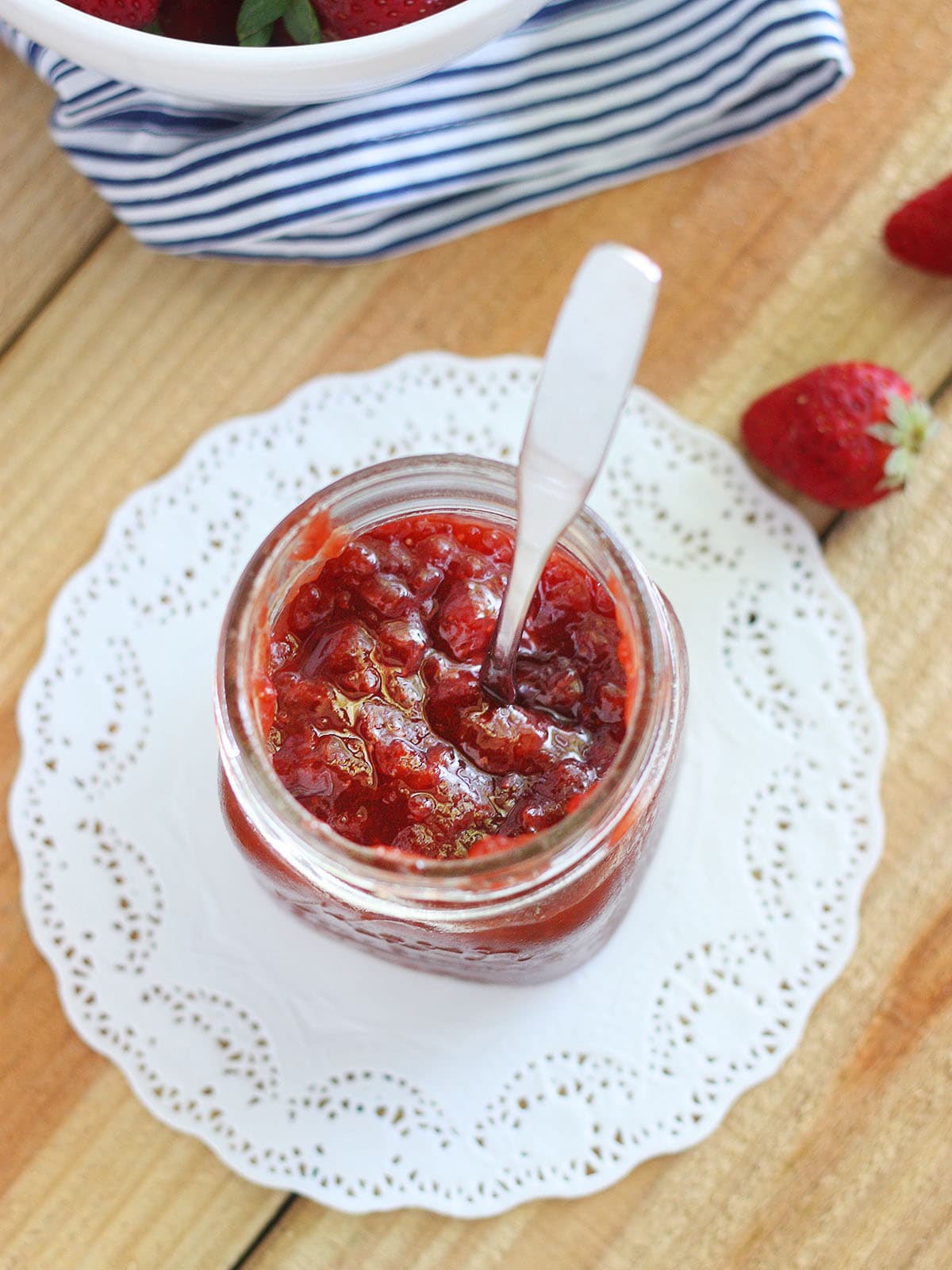
Strawberry Fig Preserves
Ingredients
- 3 cups strawberries washed, hulled and sliced
- 3 cups fresh figs stemmed and chopped
- ¼ cup bottled lemon juice
- 3 tablespoons pectin
- 4 cups white granulated sugar*
- 1 tablespoon unsalted butter
Instructions
- Pulse the strawberries and the figs in a food processor. Continue to pulse until the fruit reaches your desire consistency.
- Place the sliced strawberries and figs in a 6- or 8-quart saucepan.
- Stir in the lemon juice, then gradually add the pectin.
- Bring the mixture to a full rolling boil over high heat, stirring constantly.
- Add the sugar and stir to dissolve.
- Place the butter on top of the preserves.
- Return the mixture to a boil. Continue to boil for one minute, stirring constantly. Remove the pan from heat. Skim foam if desired.

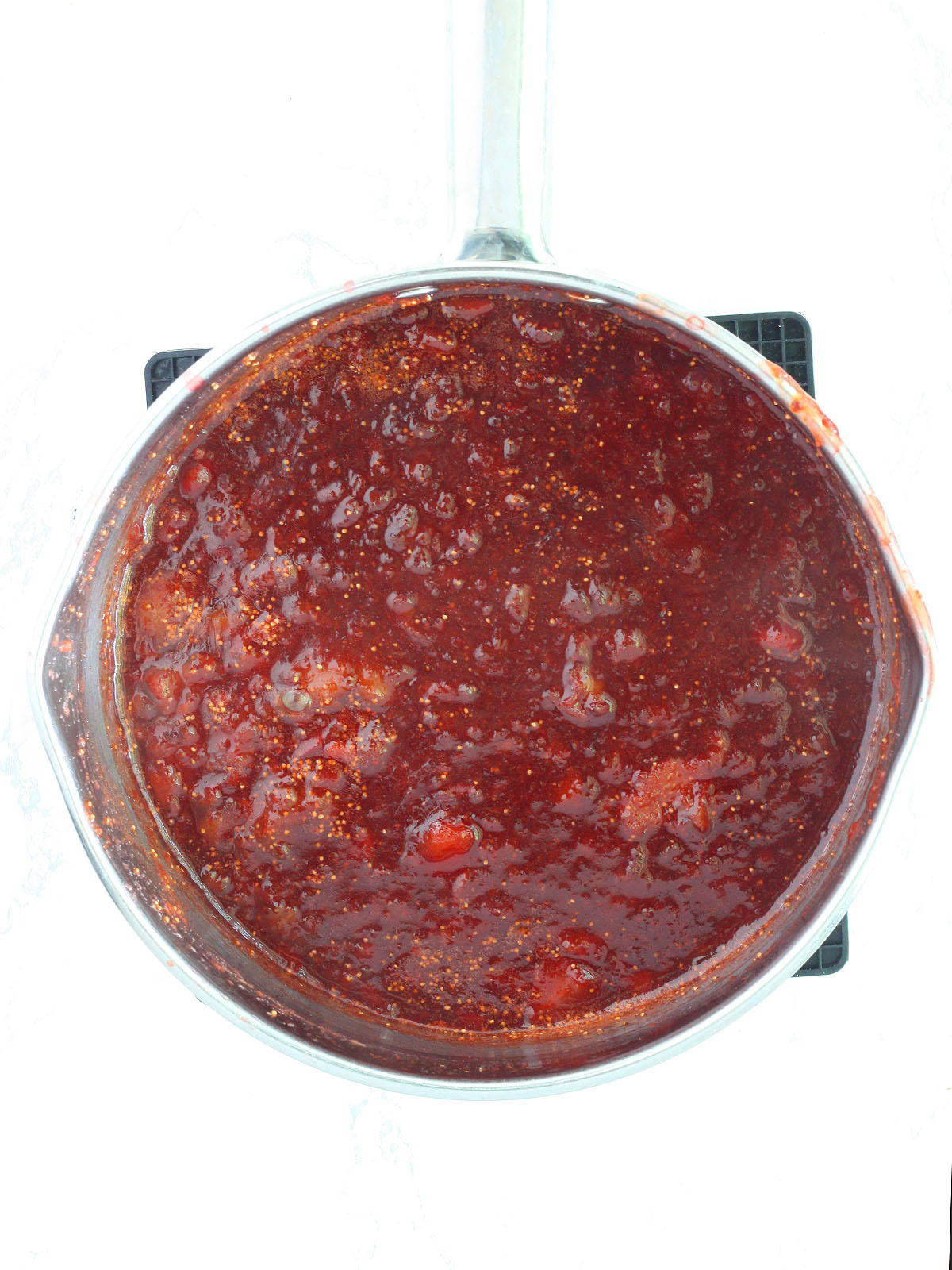
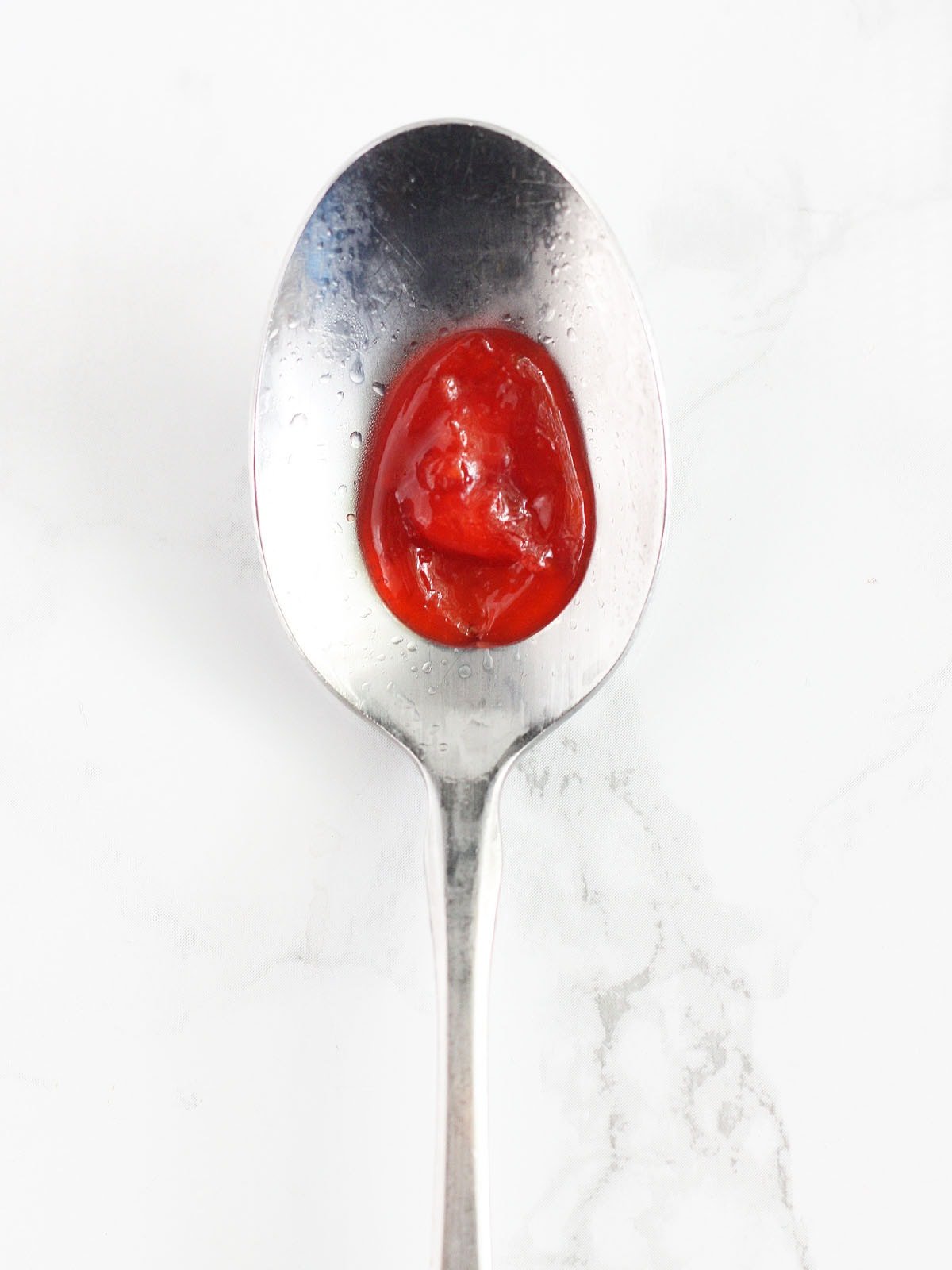
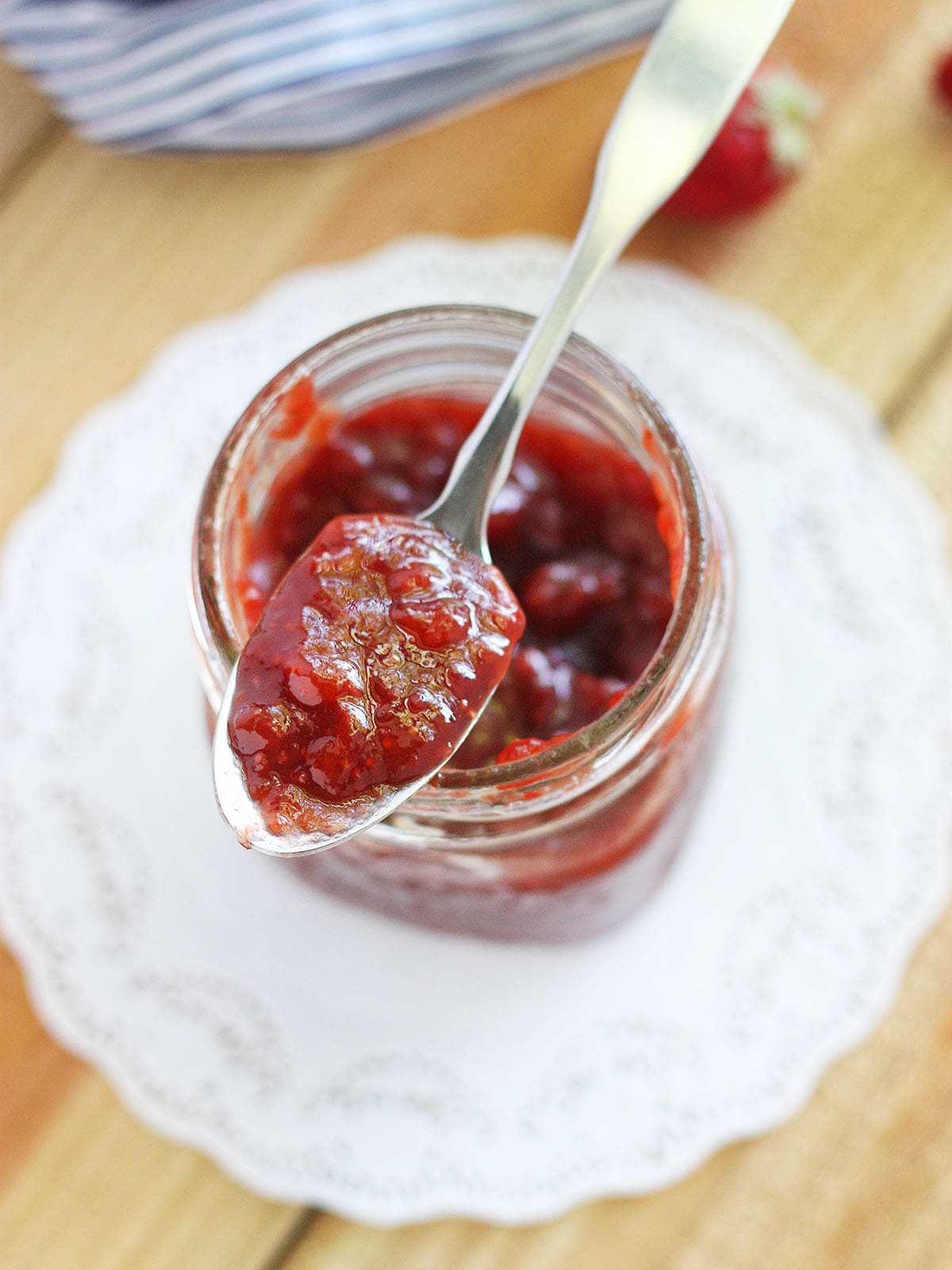

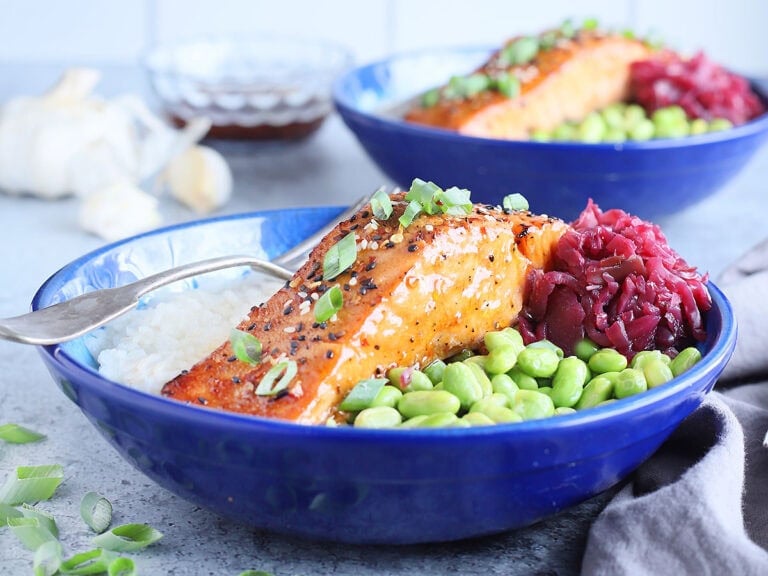
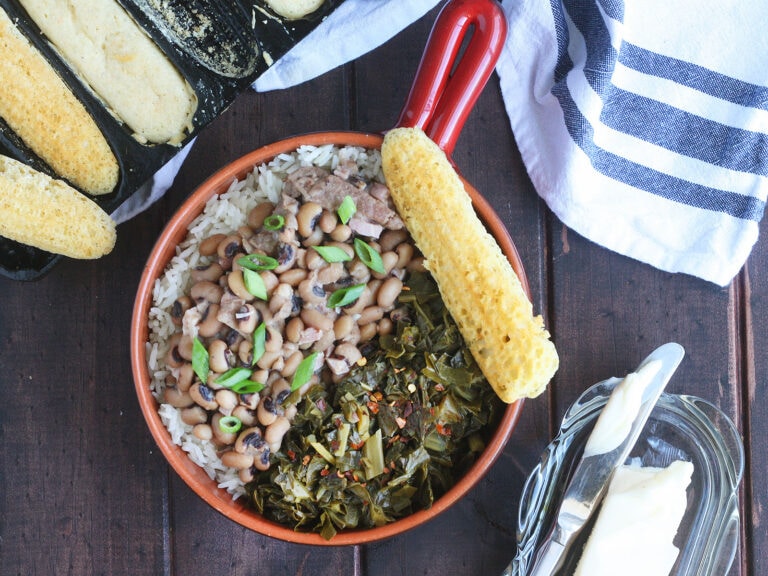
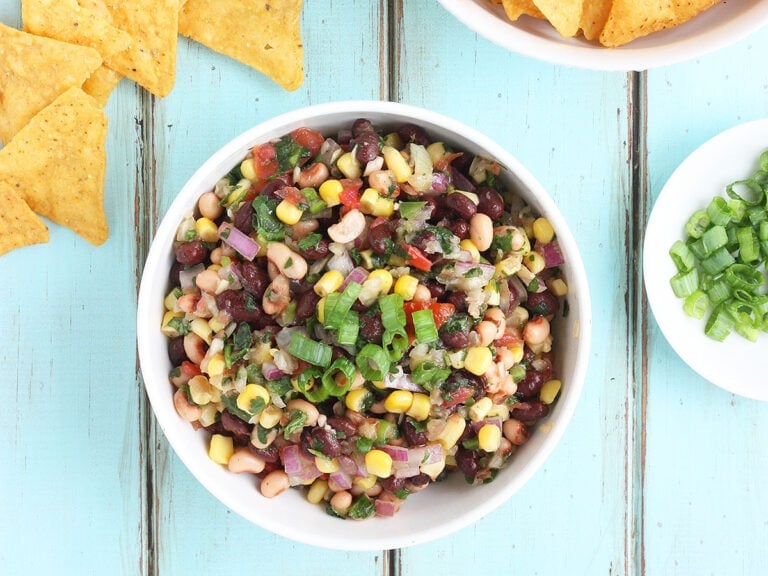
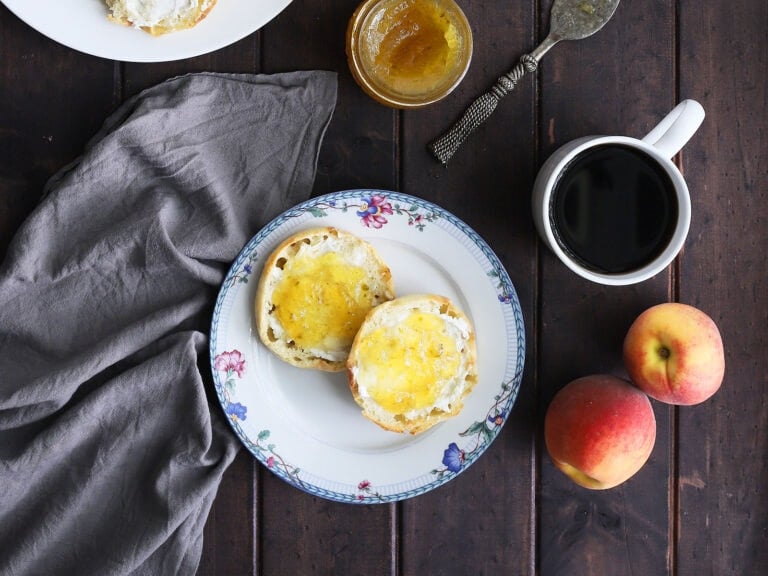

One more question – if I wanted to make a double batch of this would I simply double all of the ingredients?
If I wanted to try blueberries instead of strawberries would the amounts be the same? Would I need to adjust any of the other ingredients?
Well it’s my first time trying this alone. Your recipe looked great but, was not complicated.
Thank you, Elizabeth! I’m so glad you enjoyed the recipe.
Delicious!!! Thanks for the recipe!
ok, thx so much ! Can’t wait to try this recipe! thx for sharing it !
Judith, it is not recommended. Brown sugar can affect the flavor because of the addition of the molasses. I’ve read it can also create a scum on the jam. Won’t hurt you to eat it, but not very pretty. White granulated sugar is best.
can one use brown sugar ?
I don’t know if agave nectar would produce the same results. If you plan on canning the jam, it is recommended you use bottled lemon juice. It has a more consistent acid level than freshly squeezed lemon juice.
Can agave nectar be used instead of the white sugar? Also can real lemons be used?